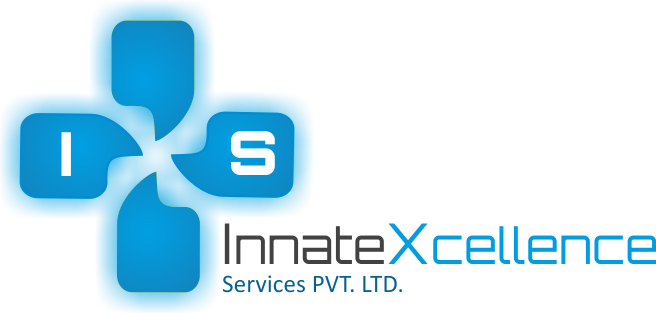Exploring Quantum Computing for Software Developers
Welcome to the cutting-edge realm of quantum computing, where classical bits and gates make way for qubits and superpositions! In this blog, we’ll embark on a fascinating journey tailored for software developers who are curious about the revolutionary world of quantum computing. From the fundamentals of quantum mechanics to the applications that promise to reshape our digital landscape, join us as we dive deep into the quantum realm and uncover the immense potential it holds for software development.
Quantum Algorithms
Here’re some of the most important quantum algorithm, and their use cases
A. Shor’s algorithm for factorization
Shor’s algorithm, developed by mathematician Peter Shor in 1994, is a groundbreaking quantum algorithm that has the potential to revolutionize cryptography. It’s designed to efficiently factor large numbers into their prime components, a task that would take classical computers an impractical amount of time for sufficiently large numbers.
Shor’s algorithm poses a significant threat to the security of widely used encryption methods, such as RSA, by making it possible to crack them in polynomial time on a sufficiently powerful quantum computer. As a result, it has spurred interest in post-quantum cryptography and the development of encryption methods resistant to quantum attacks.
B. Grover’s algorithm for database search
Grover’s algorithm, proposed by Lov Grover in 1996, addresses the problem of searching an unsorted database of N items to find a specific item with high efficiency. Unlike classical search algorithms, which require O(N) operations, Grover’s algorithm can accomplish this task in approximately √N operations, representing a quadratic speedup.
Although this doesn’t threaten cryptography like Shor’s algorithm, it has important implications for database searching, offering the potential to improve various computational tasks, including optimization problems and artificial intelligence applications.
C. Quantum simulation and optimization
Quantum computing’s power in simulating quantum systems is a major breakthrough. It allows for the simulation of quantum systems, which is extremely challenging for classical computers. Quantum simulation can be applied in various fields, including materials science, drug discovery, and fundamental physics research.
Additionally, quantum computers hold the promise of revolutionizing optimization problems, offering the potential for solving complex optimization tasks, such as route planning, supply chain management, and portfolio optimization, more efficiently than classical computers. Quantum optimization algorithms aim to leverage quantum parallelism and quantum annealing techniques to tackle these challenges and improve real-world problem-solving.
Basis of Quantum Development
Before, you start on your quantum journey, you will need to have a basic understanding of these programming languages and developers toolkit,
A. Overview of quantum programming languages
Quantum programming languages represent a pivotal aspect of quantum computing, enabling the development of algorithms that exploit the unique properties of quantum bits or qubits. These languages provide the foundation for expressing quantum operations, states, and computations, often combining elements of classical programming languages with quantum-specific features.
Prominent quantum programming languages, such as Q#, Quipper, and Quipper, are gaining traction in the quantum computing community. They facilitate the design of quantum algorithms for various applications, from cryptography to optimization, by offering a high-level abstraction for working with quantum operations, making quantum computing accessible to a broader range of developers.
B. Quantum Development Environments:
Quantum development environments are essential tools for researchers and developers working in the quantum computing domain. These environments provide a comprehensive ecosystem for designing, simulating, and executing quantum algorithms. They typically include integrated development environments (IDEs), quantum simulators, and often connections to actual quantum hardware.
Prominent examples include Microsoft’s Quantum Development Kit, IBM’s Qiskit, and Google’s Cirq. These environments offer a user-friendly interface for writing quantum code, testing it on quantum simulators, and, in some cases, even running experiments on quantum processors, thereby bridging the gap between classical and quantum computing and fostering the growth of quantum technology.
Future Trends of Quantum Computing
The future of quantum computing holds several exciting trends and developments:
1. Quantum Cloud Services: Quantum computing is likely to transition to the cloud, making it more accessible to a wider range of users. Companies like IBM and AWS are already offering quantum computing services, allowing researchers and businesses to experiment with quantum algorithms without owning expensive hardware.
2. Quantum Cryptography: Quantum computing poses a threat to classical encryption methods. In response, the development of quantum-resistant encryption techniques, such as post-quantum cryptography, will become crucial to maintaining data security.
3. Quantum Machine Learning: Quantum computers have the potential to significantly accelerate machine learning tasks. Quantum machine learning algorithms will become more refined, enabling advancements in fields like drug discovery, finance, and artificial intelligence.
Final Thoughts
The world of quantum computing presents an exciting frontier for software developers. As we’ve delved into the fundamentals of quantum mechanics, qubits, and quantum algorithms, it’s evident that quantum computing holds the potential to revolutionize various industries, from cryptography to optimization problems.
While quantum programming is still in its early stages, software developers are poised to play a crucial role in harnessing the power of quantum computers. Embracing this technology means adapting to new paradigms, mastering quantum languages, and collaborating across disciplines.



